Head to Chennai’s Vyasarpadi to try Burmese cuisine
We walk through the narrow lanes of Burma Colony in search of black rice for breakfast. We are in Chennai’s Sastri Nagar, on 16th street to be precise, at 8am, and the lanes are busy with small restaurants and stalls dishing up dosa, idlis and puris.
Between shouts from vendors, unloading bags of vegetables for the market, Selvi David hums her favorite Tamil song. She is seated in front of a wooden table where, from 7am, she sells a traditional, black rice-based Burmese breakfast.
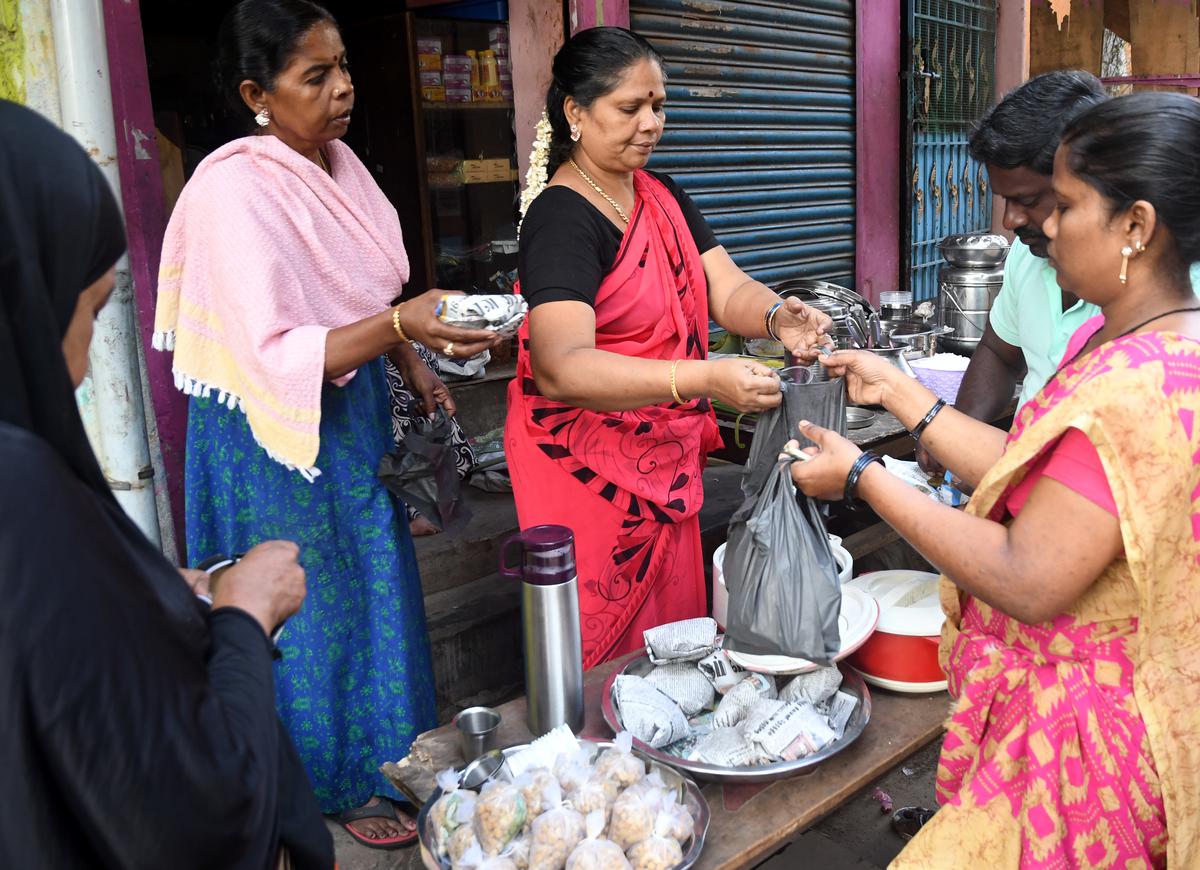
Selvi is sells a freshly made breakfast at her shop in Sastri Nagar 16th street Vyasarpadi
| Photo Credit:
JOTHI RAMALINGAM B
While the Burmese atho, bejo and mohinga are fairly well-known in the city, thanks to vendors who have been selling plates of these noodles, stuffed eggs and fish-based broth, at George Town for decades, what Selvi makes is more difficult to find. “This is an authentic Burmese breakfast made with karuppu kavuni rice,” she says. “My mother M Muniyamma taught me all these recipes. My father M Maayalagan used to run a Burmese grocery shop in this colony. He would travel to Moreh, Manipur (on the Myanmar border), to bring Burmese products as early as in 1973,” she says, adding that her parents returned from Myanmar in 1971.
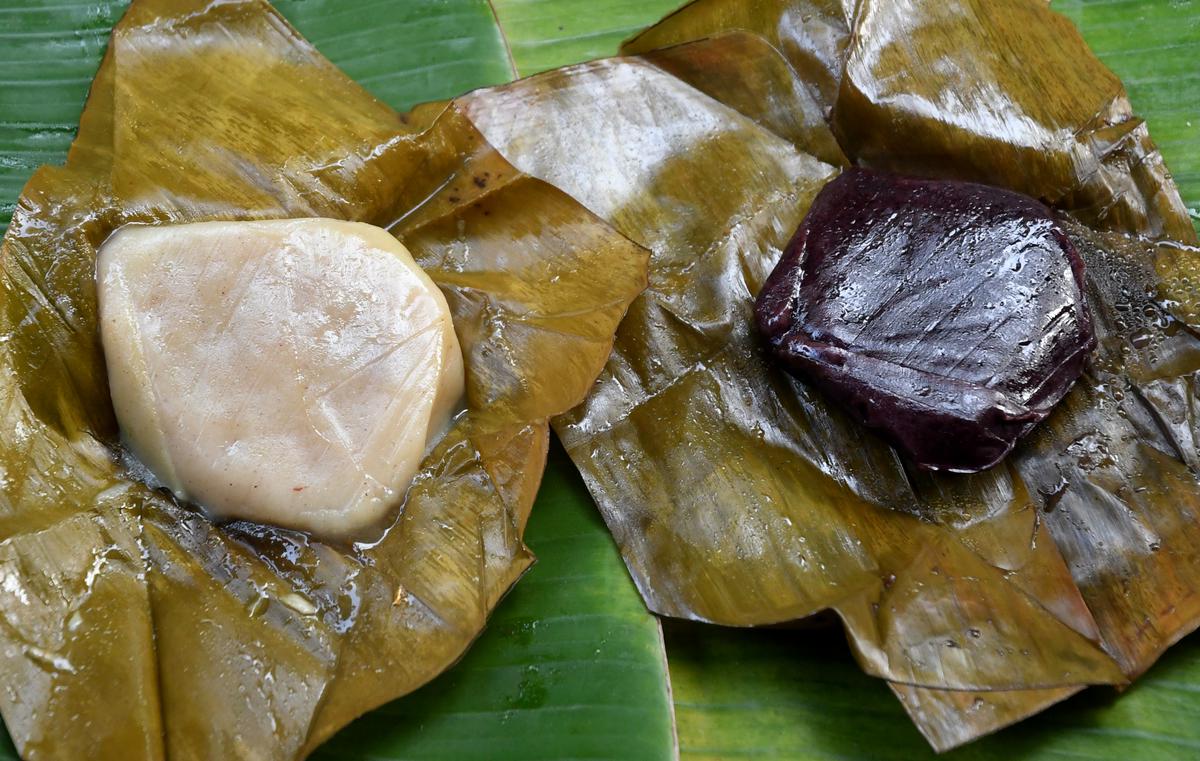
Black rice and white rice mopeto
| Photo Credit:
JOTHI RAMALINGAM B
Breakfast here is competitively priced between ₹15 and ₹30 per item. Selvi’s menu offers mopeto, which is a black or white rice flour dough stuffed with grated coconut and country sugar, then wrapped in banana leaf and steamed. Then there is black sticky rice, which is pressure-cooked with lobia beans and served with a topping of grated coconut and country sugar; kavuni rice porridge and babio, which consists of white peas soaked overnight, then cooked with salt.
Since 1992, Selvi and her husband, M David have been running a Burmese grocery shop stocking kavuni rice, Burmese green tea, cane hand fans, chinlone (cane balls), velvet slippers and more. In 2019, Selvi started offering a Burmese breakfast as well. Her day begins at 5.30am when she pressure cooks black rice that has been soaked overnight. She then steams white Burmese rice in an idli pot and makes black rice porridge. Demand is high, and she usually sells out in an hour.
David makes monthly trips to Moreh to restock his shop. “We source organic black kavuni rice and also white sticky rice at a cheaper price, which is why are able to sell our breakfast items at ₹20 and ₹30,” says Selvi. She is in an especially good mood today as she is getting ready to travel to Myanmar for the Sri Pelikan Muneeswaran Temple annual festival in Kyauktan, Yangon, Myanmar.
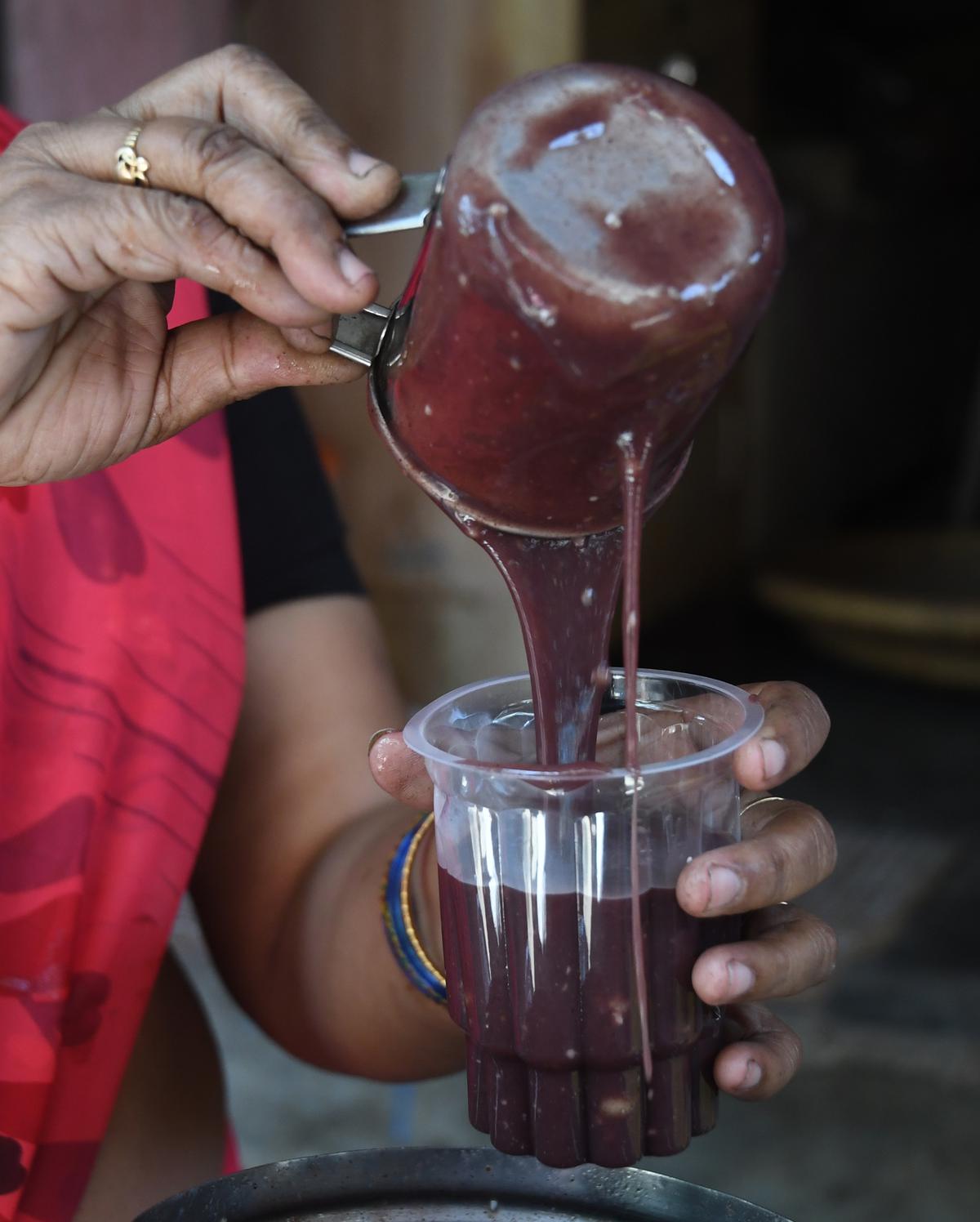
Kavuni rice porridge
| Photo Credit:
JOTHI RAMALINGAM B
“It is a very important festival for all the Tamils of Myanmar and the repatriates. Every year, the diaspora congregates at Kyauktan. People get to know each other, network and interact during this 10-day festival. “This year I am excited to be going there for the first time, though my husband has been to that event many times,” she says.
J Anthony, a 58-year-old resident of the Burma colony, whose parents were repatriates from Burma in the late ‘60s, visits Selvi’s shop almost everyday for mopeto. Explaining why he enjoys the food, he says, “Simplicity is the hallmark… you can eat babio as it is or toss it with a little sesame oil, chopped onion and tomato to make it a salad. Or you can heat sesame oil, add mustard, red chillies, then toss in babio with cooked rice and sesame for a meal.”
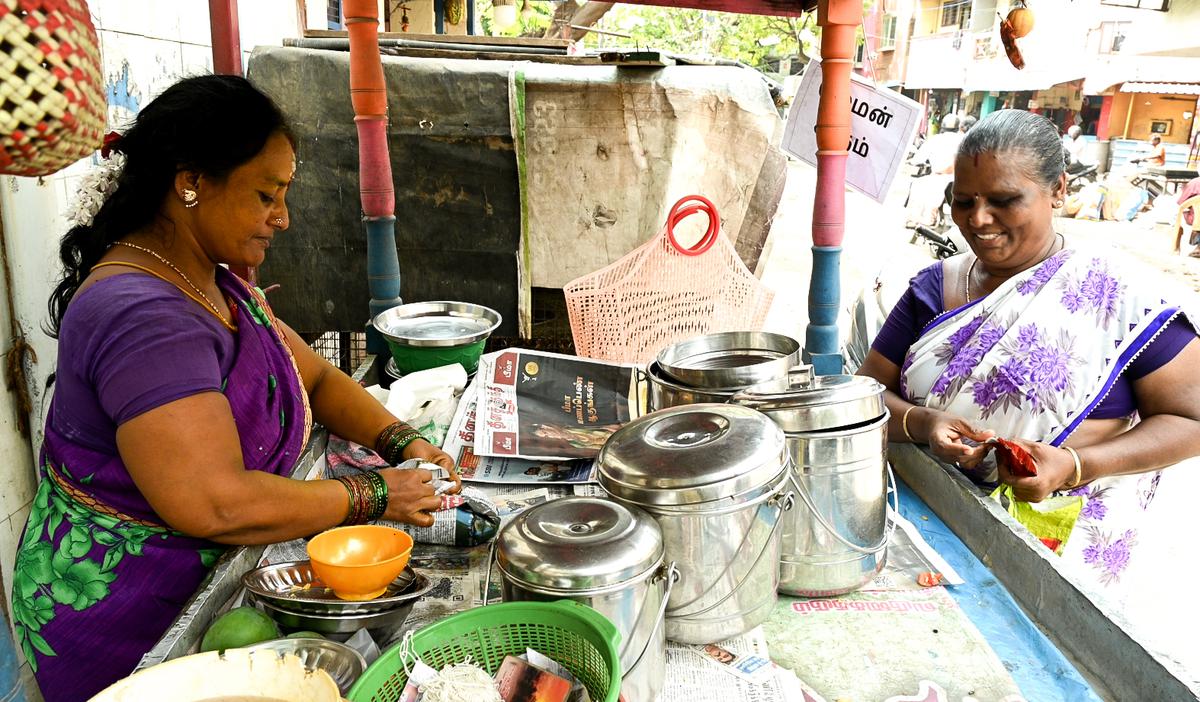
Ammu Tamilchelvan packs babio rice which is her best seller
| Photo Credit:
Johan Satyadas
Babio rice is sold in pull carts and is popular among school children in that area. Ammu Tamilchelvan’s cart, parked opposite the Kolaru Vinayagar temple in Vyasarpadi, is stacked with stainless steel buckets of babio rice, lemon rice, fish curry rice and curd rice. “Babio rice is easy to make and is very healthy – my mother-in-law gave me the recipe. I try to make it less spicy because children have to like it. I pack it with egg thokku, pudina chutney, spiced potatoes and onion fryums.” The business is competitive. “I charge only ₹30 while the other vendors serve this for ₹35,” she says.
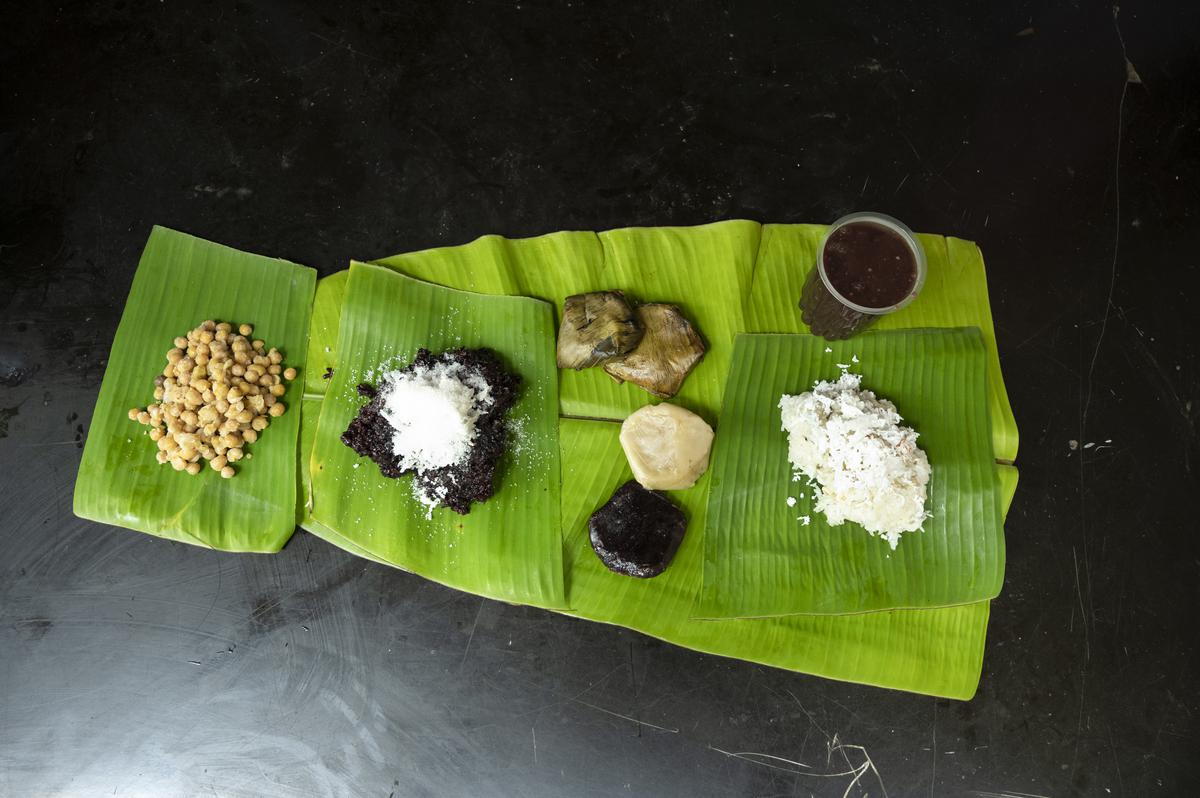
Burmese black rice breakfast dishes
| Photo Credit:
Johan Satyadas
Burmese repatriates have been living in Vyasarpadi since the 1960s. Bernard D Sami, director, Loyola Institute of Social Science Training and Research, explains how the British in India were importing rice from USA in the 1800s. “When the civil war broke out in 1861, it became difficult to source rice. Burma turned out to be a fertile land for the British to cultivate rice. They needed people who knew how to work in the rice fields, and so people from Thanjavur and Ramnad districts were taken to Burma as Thanjavur is the rice bowl of Tamil Nadu,” he says.
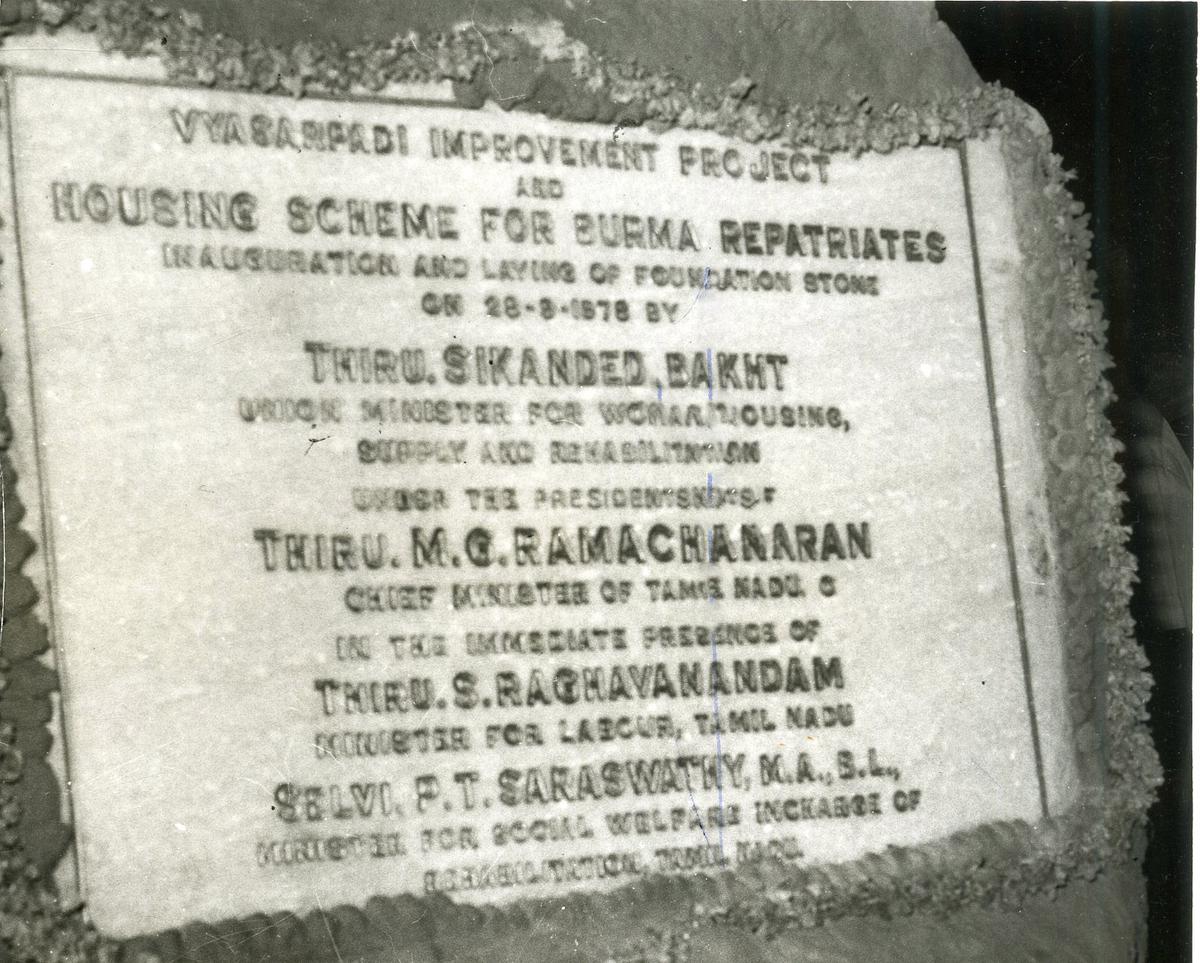
The foundation stone for Vyasarpadi Improvement Project and Housing Scheme for Burma Repatriates which was laid by the Union Minister for Works, Housing, Supply and Rehabilitation, Thiru Sikander Bakht, at Vyasarpadi on September 28, 1978.
| Photo Credit:
The Hindu Archives
He adds that after the coup d’eat of 1962, Indians were asked to become citizens or leave the country. “The repatriates reached Gummudipoondi and were given places to stay in Sharma Nagar (Sastri Nagar), Vyasarpadi and Annai Sivakami Nagar in Ennore. Some of them opted for the jobs offered by the government and some became traders. The perfumes, soaps and gadgets they brought from Burma became famous and were sold in Burma Bazaar in Parry’s corner. Slowly, Burmese food also started getting popular in Chennai and the repatriates set up stalls in front of their homes to sell atho, khow swey, mohinga, bejo and so on.”
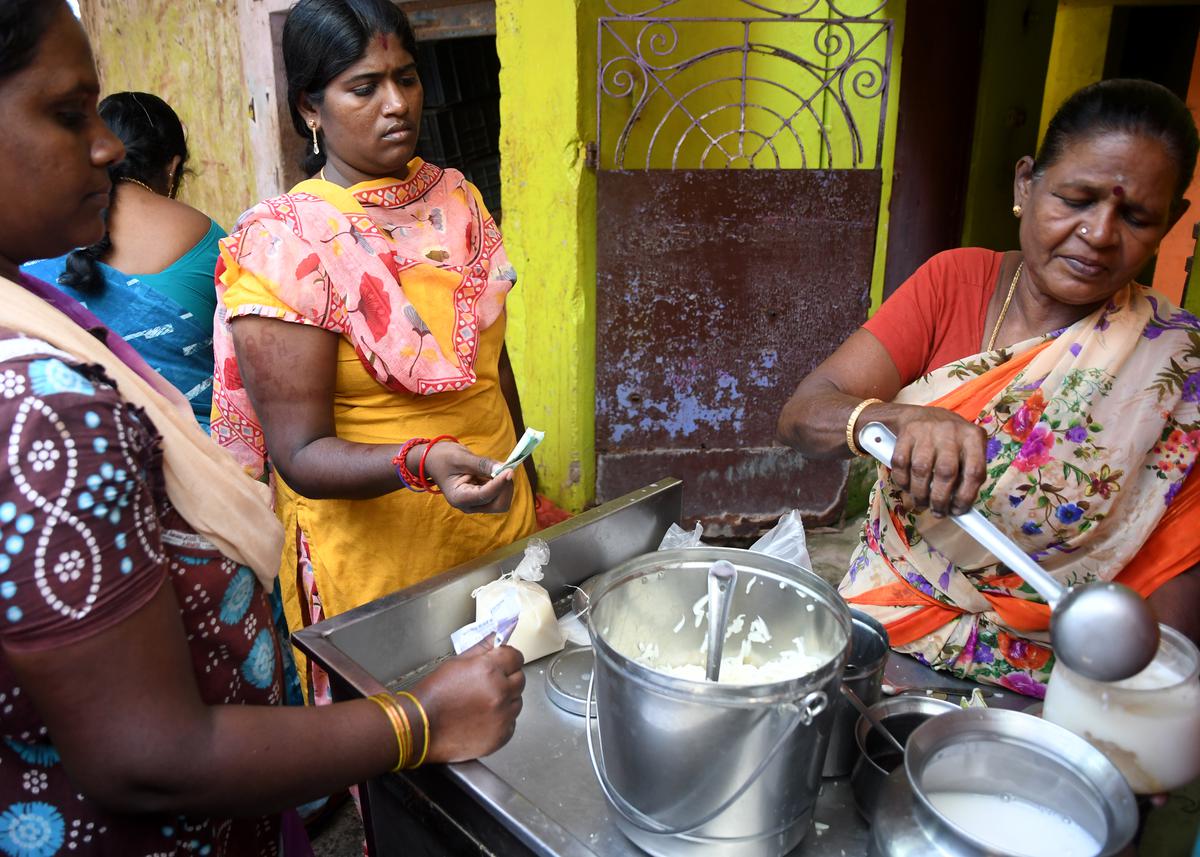
Vasantha Mani selling molesan at themarket
| Photo Credit:
JOTHI RAMALINGAM B
In the Sastri Nagar market area, 60-year-old Vasantha Mani, has been selling Burmese desserts such as molesan and chonamuki for 12 years. (Molesan is a healthy dessert of rice flour, coconut milk, jaggery and sago. Chonamuki is a Burmese halwa made with sooji, rice flour, shredded coconut and coconut milk.) “Once my children grew up, I had more time at hand and in order to supplement family income, I set up this shop right in front of my house,” she says.
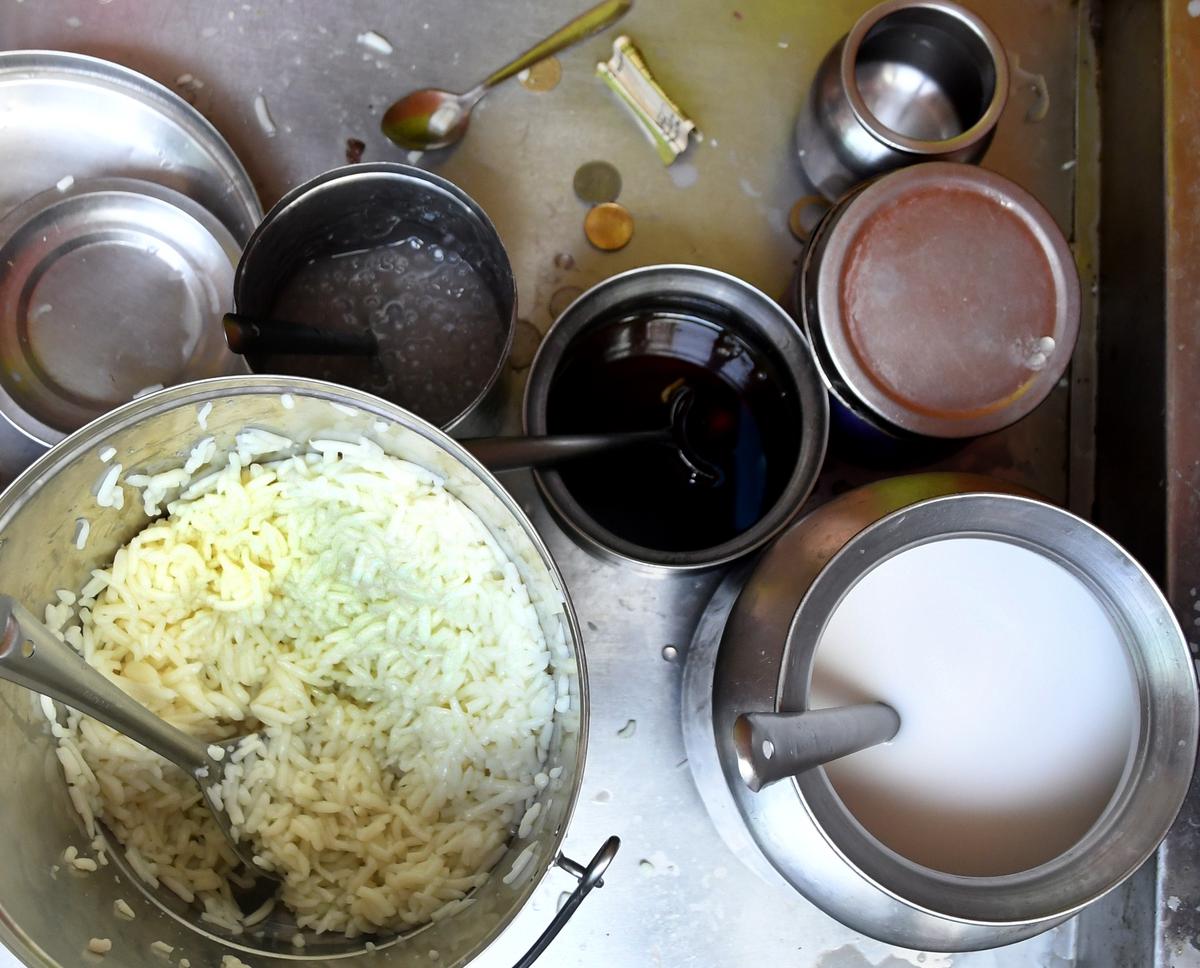
Molesan is ready to be served at Vasantha’s stall
| Photo Credit:
JOTHI RAMALINGAM B
Preparing molesan is a laborious process which involves cooking rice flour to a firm consistency, and then spreading it over a sieve to get the rice into short noodle shapes. Vasantha begins work by 3am so she can set up shop by 8am. To serve it, the rice noodles are placed in a steel glass, then topped with cooked sago pearls, jaggery and coconut milk. Similar to the Jigarthanda of Madurai, this is sold throughout the day and is popular with vendors at this market as it is a cooling summer treat.
The market area also features vendors who make Naan roti (Or Burma roti), which is available in two variations, sugar roti and podi roti, served with babio or prawn sambal at an extra cost.
Kannimari, 50, walks by Selvi’s shop for a glass of the black rice porridge. Sipping it says that she recently came back from a trip to what she considers her second mother land, Myanmar. “I still eat only Burmese food at home, and have taught my children and grandchildren to cook it too,” she says. Selvi interjects, “Mopeto making requires precision and concentration. It is back-breaking work.” Adding that her daughter helps, as it requires two people to prepare the dish, Selvi says she is determined to keep cooking it. “I am passionate about continuing our tradition and the legacy. Our children must know these flavours.”
For all the latest Life Style News Click Here
For the latest news and updates, follow us on Google News.
